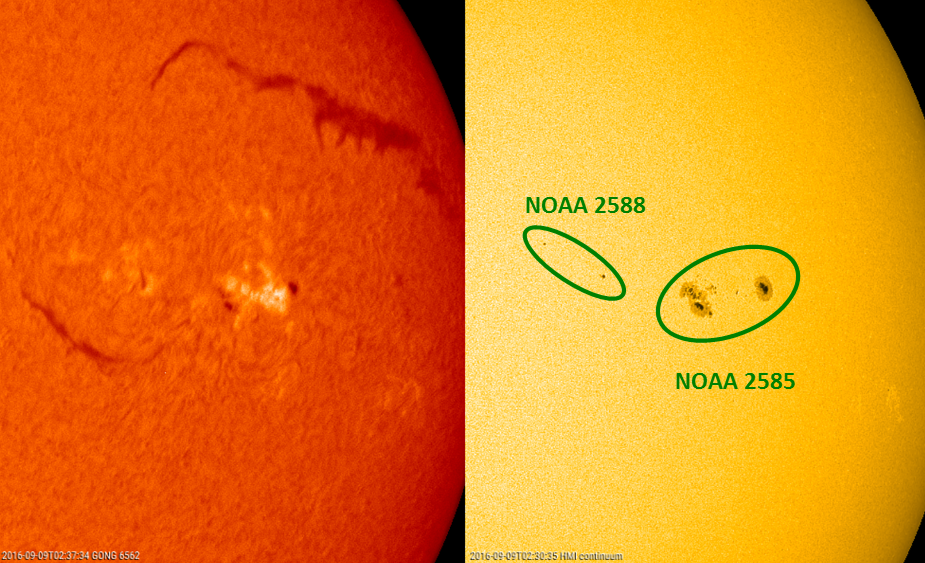news
Submitted on 2016-11-04Early October 26, 2006 the two STEREO spacecraft were launched. The twin spacecraft had to observe the Sun in stereo. Both have a similar orbit as the earth, one ahead, the other trailing behind.
Submitted on 2016-10-28And the title of ‘Corresponding Astronomer’ goes to …. Prof Jean Lilensten.
Jean Lilensten, research director of CNRS at the University of Grenoble, is a welcome guest at the Observatory and the Solar-Terrestrial Centre of Excellence.
Submitted on 2016-10-19NOAA 2599 transited the solar disk from 3 till 15 October. It reached its largest size around 5 October, when its area was equivalent to nearly 3 times the total surface area of the Earth. During its transit, it significantly changed from outlook, becoming smaller and less complex. Solar observers watching the Sun only at the beginning and the end of the period might even have had a hard time to conclude this was the same sunspot.
Submitted on 2016-10-03A filament eruption took place early on 1 October (see movie). This filament had a respectable length of about 40 degrees, i.e. more than 10% of the solar circumference or well over the average Earth-Moon distance. The feature was already visible during the previous solar rotation early September, when it transited the solar disk uneventfully (see this news item).
Submitted on 2016-09-28A huge trans-equatorial coronal hole (CH) is transiting the solar disk. According to the latest data from LMSAL/SPOCA (28 September), the total coronal hole area is the equivalent of about 880 times the total surface area of the Earth. It is by far the largest CH since the last solar cycle maximum, even dwarfing the large southern polar CH from late 2014 - early 2015 (see the 2014 space weather highlights).
Submitted on 2016-09-20For the second consecutive week, no C-class flares were observed from Earth. In fact, not a single C-class flare has been recorded so far this September month, with the last C-class event dating back already from late on 31 August. Records will not be broken soon though, as the longest period without a C-class flare was set during the past solar cycle minimum from 3 April till 3 November 2008 (213 days!).
Submitted on 2016-09-12Solar flare activity was not particularly impressive last week, with no C-class events at all. Fortunately, a B7.9 flare peaking at 03:23UT on 09 September in active region NOAA 2588, was associated with a lovely post-flare effect: the disappearance of almost an entire filament about 10 degrees to the southeast of this active region.

Submitted on 2016-09-05
The deadline Sept 12th for nomination for one of the prestigious medals in space weather, linked with the European Space Weather Week is approaching.
Submitted on 2016-09-01
We received the first data from PROBA2 of the September 1 annular solar eclipse. Again, PROBA2 was on the first row in space and therefore certain to witness it, clouds or not.
Pages
Zircon - This is a contributing Drupal Theme
Design by
WeebPal.